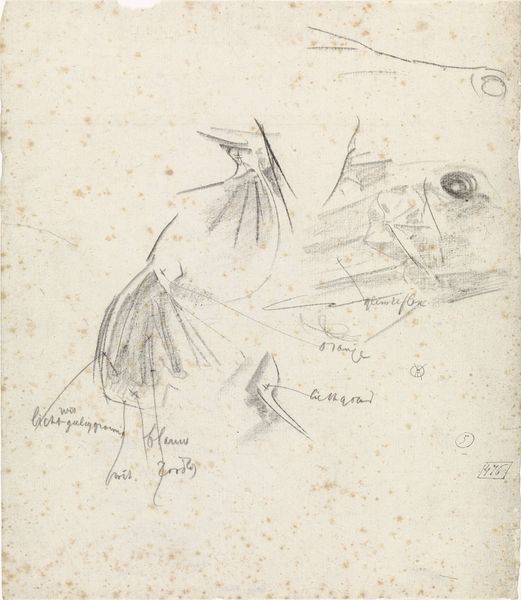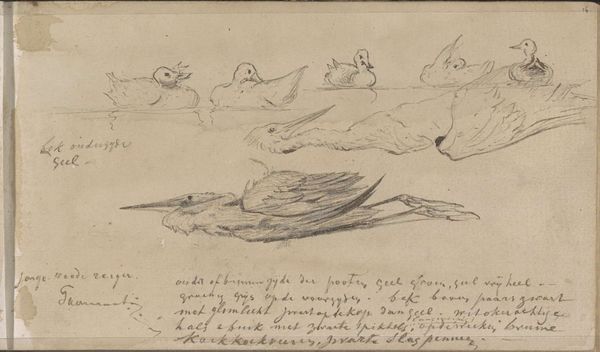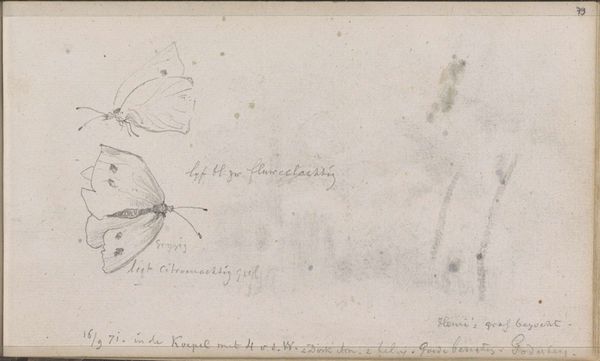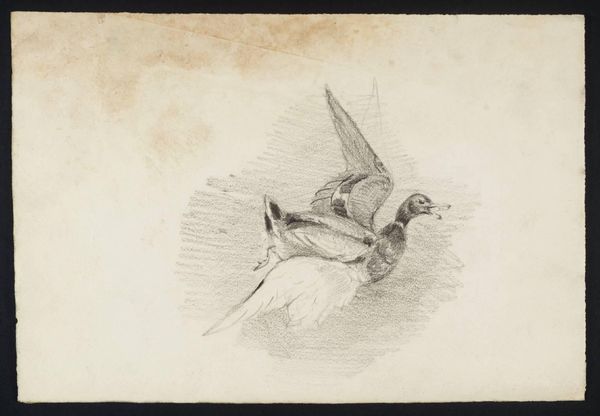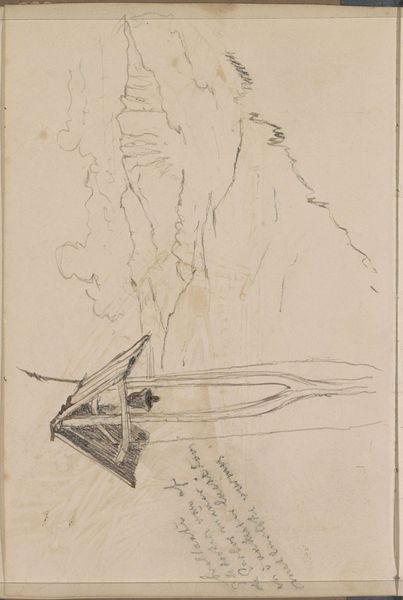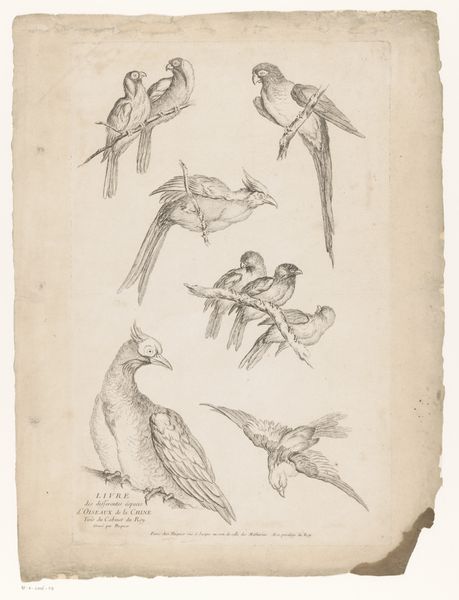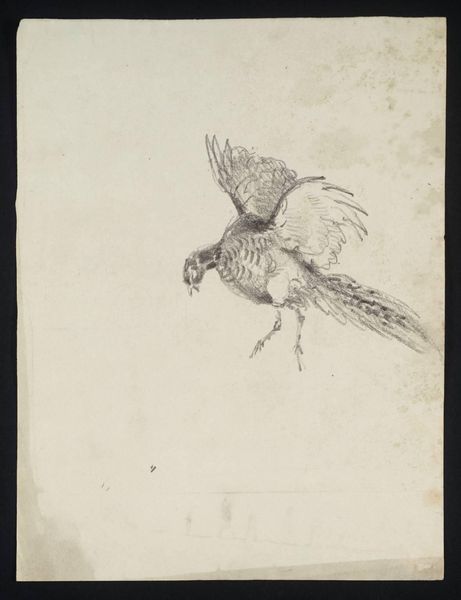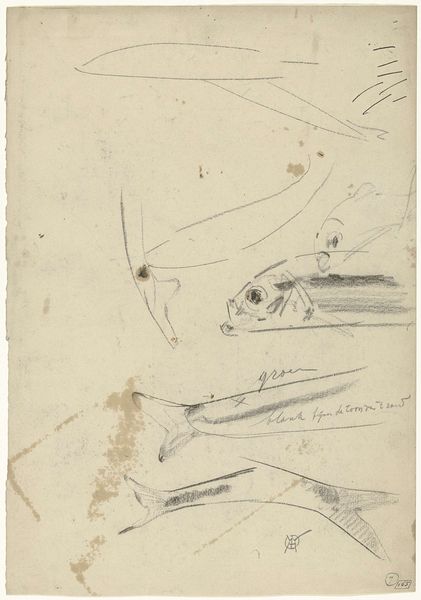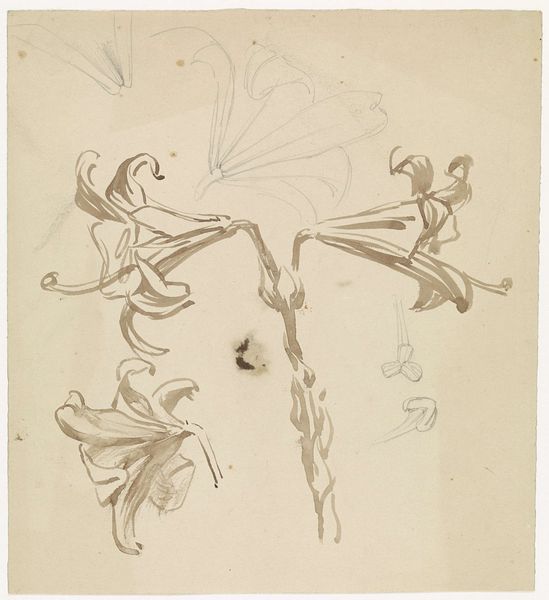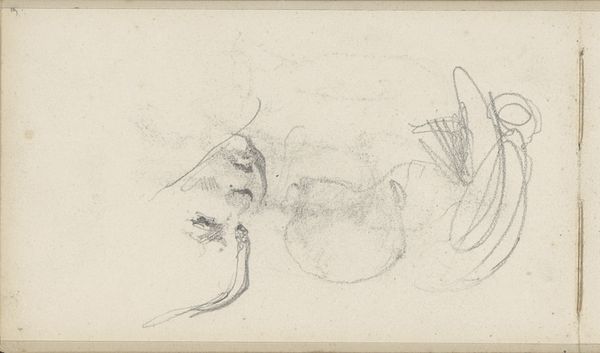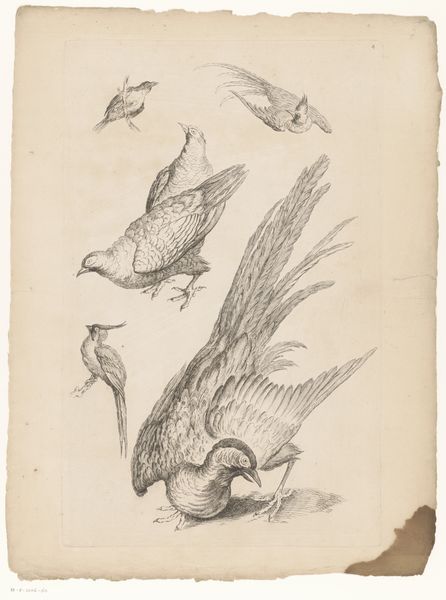
Wounded Crane with an Arrow in its Breast Before Setting Sun 1870 - 1920
drawing, print, pencil
drawing
landscape
figuration
pencil
line
symbolism
Dimensions: 4 x 4 9/16 in. (10.2 x 11.6 cm)
Copyright: Public Domain
Editor: So, this is "Wounded Crane with an Arrow in its Breast Before Setting Sun" by Max Klinger, probably from sometime between 1870 and 1920. It's a pencil drawing, pretty minimalist. I'm struck by how the composition suggests vulnerability, despite the crane still being in flight. What do you make of it? Curator: It's interesting how Klinger uses this seemingly simple image to tap into broader anxieties. Considering the period, think about the rise of industrialization and the way it impacted our understanding of nature. Could the wounded crane represent a critique of societal progress, where nature is collateral damage? Editor: That's a compelling thought. I hadn't considered it as a direct commentary, but it certainly adds a layer of meaning. So, you're saying the drawing might be less about the crane itself and more about what it symbolizes within that historical context? Curator: Precisely. Art doesn't exist in a vacuum. Klinger was part of a growing awareness, visible in arts and literature, of the environmental consequences of rapid modernization. And it challenges us, doesn’t it, to think about the ethics of imagery – how easily a symbol of freedom becomes a victim of progress. Editor: So, by presenting a wounded, flying animal, he challenges the accepted narrative of unending progress. How does that challenge the art establishment? Curator: Well, consider where art was heading then; toward movements embracing modern life. Klinger presents a counterpoint: Progress has a cost. Museums today grapple with how to show this nuanced social history of art; it’s not always celebratory, sometimes critical. It's also interesting to note how the print medium makes this commentary more widely accessible. Editor: It changes the dynamic completely, I never thought of art like that. Thanks! Curator: It's a complex artwork once you realize it reflects cultural complexities!
Comments
No comments
Be the first to comment and join the conversation on the ultimate creative platform.
